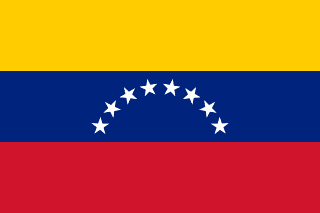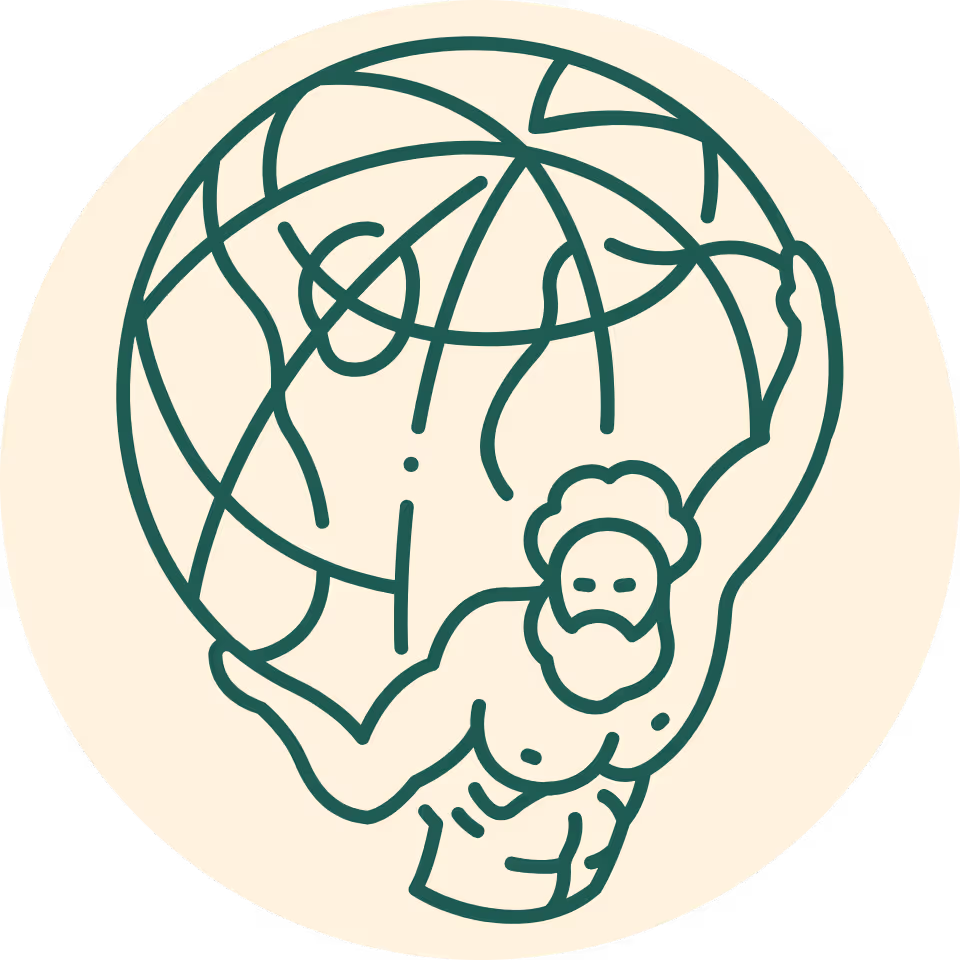Venezuela Travel Guide: Essential Tips
Explore Venezuela: From Caracas to Angel Falls

The 15 Most Searched Questions About Venezuela
1. What is the capital of Venezuela?
The capital of Venezuela is Caracas, home to 2 million people and known for its modern skyline and historical sites.
2. Do I need a visa to visit Venezuela?
EU, US, and Canadian citizens need a tourist visa, costing $30-$60; apply at a Venezuelan embassy. More details in our Documents tab.
3. What currency does Venezuela use?
Venezuela uses the Venezuelan Bolívar (VES). More details in our Currency tab.
4. Is Venezuela safe for tourists?
Venezuela has safety concerns, especially in Caracas—exercise caution and avoid risky areas. More details in our Safety tab.
5. What languages are spoken in Venezuela?
Spanish is the official language; indigenous languages like Wayuu are spoken in some regions.
6. What is Venezuela known for?
Venezuela is known for Angel Falls, its oil reserves, and the Orinoco Delta. More details in our Top Attractions tab.
7. What is the best time to visit Venezuela?
The dry season (November to April) is ideal, with temperatures of 25-30°C; the rainy season (May to October) brings heavy rainfall.
8. Is it expensive to visit Venezuela?
Venezuela can be affordable due to currency fluctuations—a daily budget of $50-$100 covers most expenses.
9. Can I drink tap water in Venezuela?
Tap water isn’t safe—use bottled water, which costs $1-$2 per liter, especially outside Caracas.
10. What are some must-visit places in Venezuela?
Must-visits include Angel Falls, Los Roques, and the Andes. More details in our Top Attractions tab.
11. How is the climate in Venezuela?
Venezuela has a tropical climate: dry season (November-April) is 25-30°C; rainy season (May-October) brings heavy rains and humidity.
12. Are there festivals in Venezuela?
Yes, Carnival in February is vibrant, and the Feria de la Chinita in Maracaibo (November) celebrates local culture.
13. What souvenirs should I buy in Venezuela?
Popular souvenirs include handmade hammocks, cacao products, and indigenous crafts.
14. How do I get around in Venezuela?
Buses from Caracas to Mérida cost $15 and take 12 hours. Domestic flights to Canaima (for Angel Falls) cost $150-$200.
15. What traditional dishes should I try in Venezuela?
Try arepas, pabellón criollo, and hallacas. More details in our Local Cuisine tab.
About Venezuela
Venezuela, located in South America, spans 916,445 square kilometers, bordered by Colombia, Brazil, Guyana, and the Caribbean Sea. Caracas, the capital, is home to 2 million people—about 7% of Venezuela’s total population of 28 million (2023 estimate). The population is diverse, with a mix of mestizo, European, African, and indigenous descent, and Spanish is the official language, though indigenous languages like Wayuu are spoken in regions like Zulia. Visa requirements vary—EU, US, and Canadian citizens need a tourist visa costing $30-$60, while some nationalities may enter visa-free for 90 days. In 2023, Venezuela welcomed 500,000 tourists, drawn by natural wonders like Angel Falls, Los Roques archipelago, and the Andes. The economy, heavily reliant on oil, has faced challenges, but tourism is rebounding, contributing $300 million in 2023. The climate is tropical: the dry season (November-April) sees temperatures of 25-30°C, while the rainy season (May-October) brings heavy rainfall and humidity. Budget travelers can manage on $50-$100 per day, with a local meal costing $5-$10 and a coffee $1-$2; upscale dining in Caracas can cost $20-$40 per person. Public transport includes buses ($0.50-$15 for long routes) and taxis in Caracas starting at $2-$5 per ride; domestic flights to Canaima (for Angel Falls) cost $150-$200. Cultural events like Carnival in February feature vibrant celebrations, while the Feria de la Chinita in Maracaibo (November) honors the Virgin of Chiquinquirá. Venezuela’s history includes indigenous cultures, Spanish colonization in the 16th century, independence in 1821, and political-economic challenges in the 21st century. Known for its stunning landscapes, biodiversity (Orinoco Delta, Amazon rainforest), and rich cultural heritage, Venezuela offers a unique adventure for intrepid travelers seeking nature and culture.
Visa & Passport for Venezuela: Entry Requirements for Travelers
- Passport Requirements: Your passport must be valid for at least 6 months beyond your entry date into Venezuela and have at least one blank page for stamps. Children need their own passports—they cannot travel on a parent’s passport.
- Visa Requirements: EU, US, and Canadian citizens require a tourist visa, costing $30-$60, depending on nationality—apply at a Venezuelan embassy or consulate. Some nationalities, like those from Brazil and Colombia, can enter visa-free for 90 days. Overstaying can result in fines of $50-$100, payable upon departure.
- Other Requirements: Proof of onward travel and a yellow fever vaccination certificate are required, especially for jungle areas like Canaima. Travel insurance covering medical emergencies is strongly recommended due to limited healthcare access.
Driving in Venezuela: Road Rules & Tips for Tourists
- Driver’s License: An International Driving Permit (IDP) is required alongside your national license. Car rentals in Caracas start at $40 per day; a 4WD is recommended for remote areas like the Andes or Gran Sabana.
- Road Rules: Drive on the right side of the road. Speed limits are 60 km/h in urban areas and 80-100 km/h on highways. Seat belts are mandatory, and the legal blood alcohol limit is 0.08%—fines for violations start at $50.
- Road Conditions: Major roads like the Caracas-Valencia highway are paved but may have potholes; rural roads, especially in the Amazon, are often unpaved and require caution. Fuel shortages can occur—fill up in cities.
- Transport: Buses from Caracas to Mérida cost $15 and take 12 hours. Domestic flights to Canaima (for Angel Falls) cost $150-$200 and take 1.5 hours.
- Emergency Number: Dial 911 for police or medical emergencies.
Currency in Venezuela: Using the Bolívar for Your Trip
- Venezuelan Bolívar (VES): The official currency. The exchange rate is highly volatile—approximately 35 VES to 1 USD (as of May 2025), but check current rates.
- Currency Exchange: Exchange money at official exchange houses in Caracas—avoid black market exchanges due to scams. ATMs are unreliable; bring USD in small denominations for exchanges.
- Payment Methods: Cards are rarely accepted outside major hotels in Caracas; cash (USD or VES) is king. Mobile payments are emerging but not widespread.
- Costs: A local meal costs $5-$10, a coffee $1-$2, and a souvenir like a handmade hammock costs $10-$20.
Legal Guide for Venezuela: Laws Travelers Should Know
- Local Laws: Recreational marijuana is illegal—possession can lead to fines of $100 or detention. Public protests can be risky—avoid them to prevent legal issues.
- Cultural Sensitivities: Respect local customs, especially in indigenous areas like the Orinoco Delta—avoid intrusive photography. More details in the Culture & Etiquette tab.
- Photography Restrictions: Photography of government buildings or military sites is prohibited—fines start at $50. Ask permission when photographing locals, especially during festivals like Carnival.
- Public Behavior: Public nudity is illegal—fines start at $50. Littering incurs fines of $20-$40.
- Customs Rules: You can bring up to 2 liters of alcohol and 200 cigarettes duty-free. Declare cash over $10,000—currency controls are strict.
- Emergency Contact: Dial 911 for police or medical emergencies.
Travel Safety in Venezuela: Staying Safe During Your Trip
- Crime: Venezuela has high crime rates, especially in Caracas—avoid walking alone at night and steer clear of high-risk areas like Petare. Tourist areas like Los Roques are safer.
- Road Safety: Major roads are decent, but rural roads can be challenging—use a 4WD for the Gran Sabana. Public buses in Caracas cost $0.50 per ride but can be crowded.
- Health Risks: Tap water isn’t safe—use bottled water. Malaria and dengue are risks in jungle areas; use mosquito repellent and consider prophylaxis for Canaima.
- Natural Hazards: The rainy season (May-October) can cause flooding in the Orinoco Delta—check weather updates. Landslides are a risk in the Andes during heavy rains.
- Outdoor Safety: Angel Falls treks involve remote jungle areas—always go with a licensed guide. Sunburn is a risk on Caribbean beaches; use SPF 30+.
- Medical Facilities: Hospital de Clínicas in Caracas is recommended for emergencies, but facilities outside cities are limited—bring necessary medications.
- Emergency Contacts: Dial 911 for police or medical emergencies. The US Embassy in Caracas can be reached at +58 212-975-6411 (though services may be limited).
Culture & Etiquette in Venezuela: What to Know
- Greetings: A handshake is common; friends may share a hug or cheek kiss. Use “Señor” or “Señora” to show respect to elders.
- Dining Customs: Tipping is expected—10% in restaurants. Meals are social; lunch is the main meal, often around 2 PM.
- Community Respect: Venezuelans are warm and hospitable—avoid discussing politics, as it’s a sensitive topic. Dress modestly in rural areas.
- Festivals: Carnival in February features colorful parades. The Feria de la Chinita in Maracaibo (November) includes music and dance.
- Language Tips: Spanish is widely spoken—learning phrases like “Gracias” (thank you) is appreciated. English is limited outside tourist areas.
- Social Practices: Venezuelans are punctual for social events but more relaxed for casual meetups. Sharing food, like arepas, is a sign of friendship.
Local Cuisine in Venezuela: Dishes & Drinks to Try
- Arepas: Cornmeal patties filled with cheese, meat, or avocado—$2-$5.
- Pabellón Criollo: A national dish with shredded beef, black beans, rice, and plantains—$5-$8.
- Hallacas: Tamales filled with meat, popular during Christmas—$3-$6.
- Chicha: A sweet corn or rice drink—$1-$2.
- Rum: Venezuela’s famous rum, like Santa Teresa—$10-$20 per bottle.
- Where to Eat: In Caracas, street vendors near Sabana Grande serve authentic arepas. In Mérida, restaurants with Andes views offer pabellón criollo. Both are highlighted in our Top Attractions tab.
Top Attractions in Venezuela: Must-Visit Places
- Angel Falls: The world’s tallest waterfall in Canaima National Park. Search for tours on Tiqets.
- Los Roques: A Caribbean archipelago with pristine beaches. Search for tours on Tiqets.
- Mérida: A city in the Andes with cable car rides to Pico Bolívar. Search for tours on Tiqets.
- Orinoco Delta: A biodiversity hotspot for wildlife tours. Search for tours on Tiqets.
- Morrocoy National Park: Coral reefs and mangroves near Tucacas. Search for tours on Tiqets.
- Roraima: A tabletop mountain in the Gran Sabana for trekking. Search for tours on Tiqets.
- Where to Eat: In Caracas, Sabana Grande vendors offer fresh arepas in a lively setting. In Mérida, try Restaurante La Montaña for pabellón criollo with stunning Andes views.
Flights to Venezuela: Travel Options
Simón Bolívar International Airport (CCS) in Maiquetía, near Caracas, is the main gateway, with flights from Miami, Bogotá, and Panama City. A taxi from CCS to central Caracas costs $20-$30 and takes 30 minutes. Domestic flights to Canaima cost $150-$200.
Create Your Packing List for Venezuela
Travel Tips for Venezuela
- Connectivity: SIM cards from Movilnet or Digitel offer 5-10 GB for $5-$10, available at the airport. Wi-Fi is limited outside Caracas—download offline maps.
- Health Prep: Yellow fever and malaria prophylaxis are recommended for jungle areas. Tap water isn’t safe—carry a reusable bottle and buy bottled water.
- Weather Prep: Pack lightweight clothing for the tropical climate (25-30°C year-round). Include rain gear for the rainy season (May-October) and hiking boots for Angel Falls or Roraima.
- Navigation: Use Google Maps in cities—offline maps are essential for remote areas like Canaima. Buses ($0.50-$15) are affordable but slow; taxis in Caracas cost $2-$5 per ride.
- Peak Season: Carnival in February draws crowds to Caracas and coastal areas—book accommodations early to avoid high rates, which can reach $120 per night.
